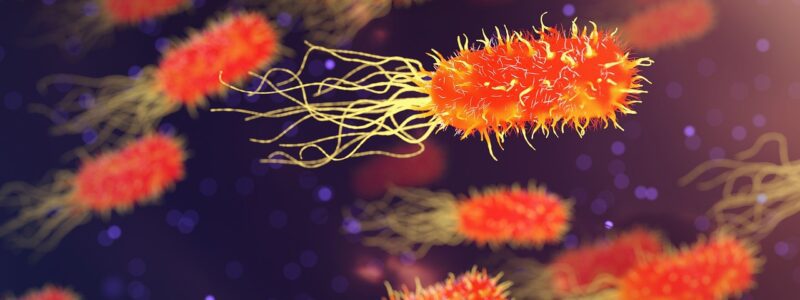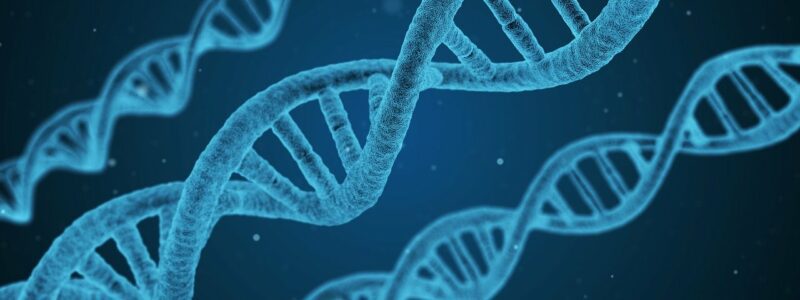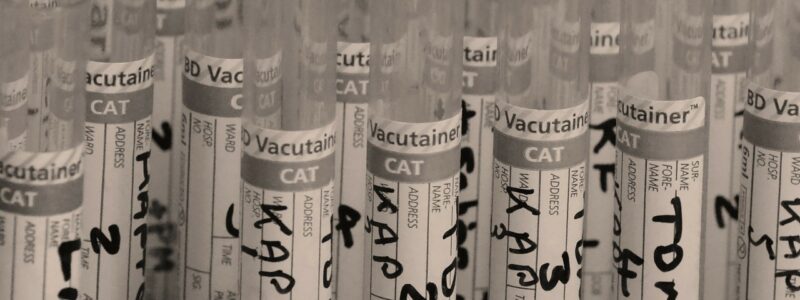Evolution of New Enzymes
The evolution of new enzymes for the digestion of nylon and plastics has been used to support Darwinian evolution. But is this the case, or do these new enzymes illustrate the limits of evolution?
The Emergence of Nylon

Nylon stockings
Nylon was first developed in the 1930s and used commercially in a nylon-bristled toothbrush in 1938. The greatest use of nylon was in women’s stockings. This use was illustrated at the 1939 New York World’s Fair and sold commercially soon afterward. Nylon stockings became an instant commercial success, with 64 million pairs sold the first year they became available. Wartime use diverted much of the nylon material to military applications such as parachutes and cords.
Nylon is a generic designation for a type of synthetic polymer consisting of polyamides. It is a new molecule presumably never before seen previously on planet Earth. Yet, an enzyme able to degrade nylon emerged about forty years after the development of nylon. Where did this enzyme come from?
Nylonase
Proteins are strings of amino acids. If any string of amino acids can form a functional protein of some sort, then the formation of life through natural causes becomes much easier. But enzymes not only need to have the right amino acids in the string, but they have to fold so that the fold produces an “active site.” This active site carries out the enzymatic activity of breaking down nylon.
Making nylonase from scratch by bacteria exposed to nylon seems impossible. This is because too many amino acids have to be in the right order for this to happen. Behe has shown in his book The Edge of Evolution that new enzymes can be made from other enzymes through, at most, a two-step process. The intermediary enzyme must show some benefit to the organism, or it will not survive. Behe documented how resistance to chloroquine developed through this two-step process – but this is evolution’s limit.
The production of nylonase resulted from two nucleotide changes in the DNA of an existing gene of an enzyme that was already degrading other similar organic compounds. More importantly, nylonase did not arise as a newly formed folded protein enzyme made from scratch. Instead, it resulted from a simple two-step process that modifies an existing protein.
The Press and Evolution of New Enzymes
The nylonase story was not explained as a simple two-nucleotide substitution in the initial press briefings. Instead, the media presented nylonase as a new enzyme made through a “frame-shift mutation.” This type of mutation involves inserting or deleting a nucleotide into the DNA sequence coding for a precursor enzyme, radically altering the protein it produced. According to this story, the protein produced folded correctly to metabolize nylon – a highly unlikely event. Unfortunately for the media, there is no evidence this story is true.
Evolution of New Enzymes to Degrade Plastic
A team of scientists from Saudi Arabia wrote a paper concerning an interesting finding. They were

Mountain of plastic waste
surprised that the total amount of plastic produced by humans – about 150 teragrams of plastic waste – is not matching the amount of plastic found at sea. There was considerably less plastic at sea than there should be, knowing the rate of plastic production.
They noted,
Estimates of marine plastic stocks, a major threat to marine life, are far lower than expected from exponentially-increasing litter inputs, suggesting important loss factors. These may involve microbial degradation as plastic-degrading polyethylene terephthalate enzyme (PETase) has been reported in marine microbial communities. … We found oceanic PETases in 90.1% of samples across all oceans and depts, particularly abundant at 1,000 m depth, with a strong dominance of Pseudomonadales containing putative highly-efficient oceanic PETase variants in the dark ocean. Enzymatic degradation may be removing plastic from the marine environment while providing a carbon source for bathypelagic microbial communities.
They further note,
99 percent of the plastic that entered the oceans cannot be accounted for.
This truly amazing finding provides some hope for oceanic pollution from plastics. This provides some hope that microbes can reduce at least some forms of plastic pollution.
The Proceedings of the National Academy of Sciences described a bacterial strain that had the ability to digest a man-made plastic. The bacterium Ideonella sakaiensis 201-F6 produces an enzyme that can degrade polyethylene terephthalate or PET. PET is a major contributor to non-degradable plastic waste. The enzyme itself is similar to several other enzymes that have similar activities. However, the new enzyme has an active site that is slightly larger and better able to interact with PET.
Importance of the Evolution of New Enzymes

Plastic Pollution
The importance of these findings can hardly be overstated as they offer a possible long-term solution to plastic waste accumulating throughout the environment.
But the question remains: does the evolution of new enzymes, such as the one breaking down plastic, negate the idea of intelligent design? Intelligent design does not mitigate against one or even two-step selectable mutations that can lead to modified function of the enzyme in question. It is well within the capability of natural processes to modify an enzyme as long as each step increases the benefit of the changes to the organism.
Nor does a change in a nucleotide resulting in a new amino acid being incorporated into the enzyme add any new information. The new structure is derived from a pre-existing structure in the enzyme.
Notice there is no discussion regarding a radical change in the enzyme or some change that adds new information or nucleotide sequence. A single nucleotide substitution results in a mild conformational change in an already available enzyme resulting in new or improve
Summary
Microevolution is at work all the time throughout the entire biosphere. Most of these single nucleotide changes, such as the one producing sickle cell anemia, are disadvantageous.
Occasionally, a nucleotide substitution can change the structure of the enzyme’s active site, changing what it can do. This change in function may, for example, enable an enzyme to chew up nylon waste or another enzyme to chew up plastic waste.
These small changes do nothing to explain how the original protein enzyme came into being. As we have shown elsewhere, the probability of a random amino acid sequence producing a biologically important enzyme is negligible. The production of the original enzyme is what requires intelligent design and a Designer.




